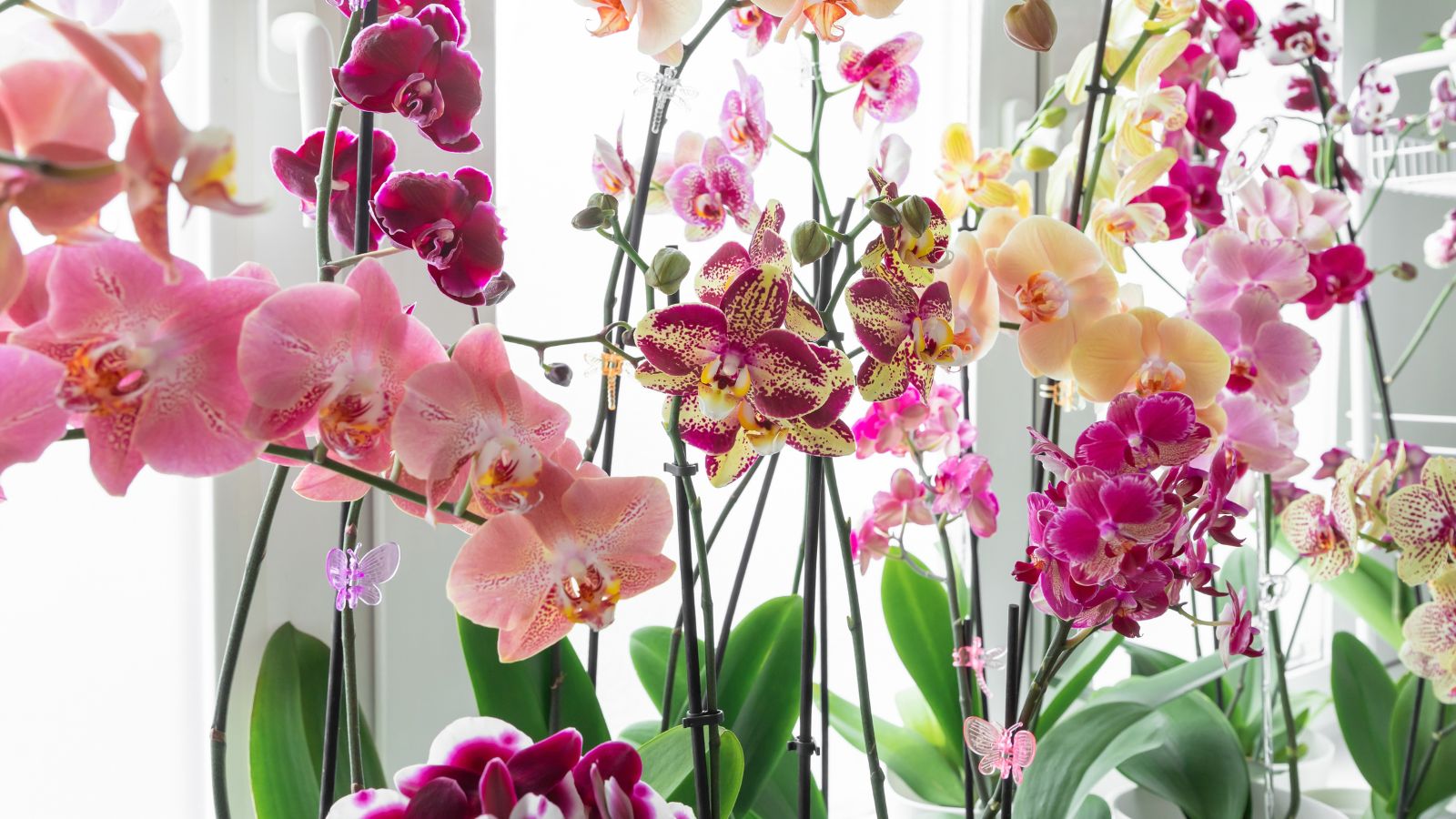[ad_1]
Orchids could also be mysterious, significantly for these new to the curiosity. These epiphytes don’t develop in soil inside the wild like commonest houseplants, so their elementary desires are a bit completely completely different. How do you repot them, and when should you do it?
When repotting a rising orchid, a fundamental rule of thumb is to pursue a model new container that’s one measurement up from the sooner. This means about two inches wider in diameter. You have to always use current bark or potting mix.
There are a handful of tell-tale alerts that it’s time to maneuver your orchid into an excellent greater, brisker pot. There’s moreover a list of not-so-obvious indicators, along with circumstances the place repotting might help a struggling plant flourish as quickly as further. Take into consideration the subsequent indicators that it’s time to repot your orchid.
Crowded Roots
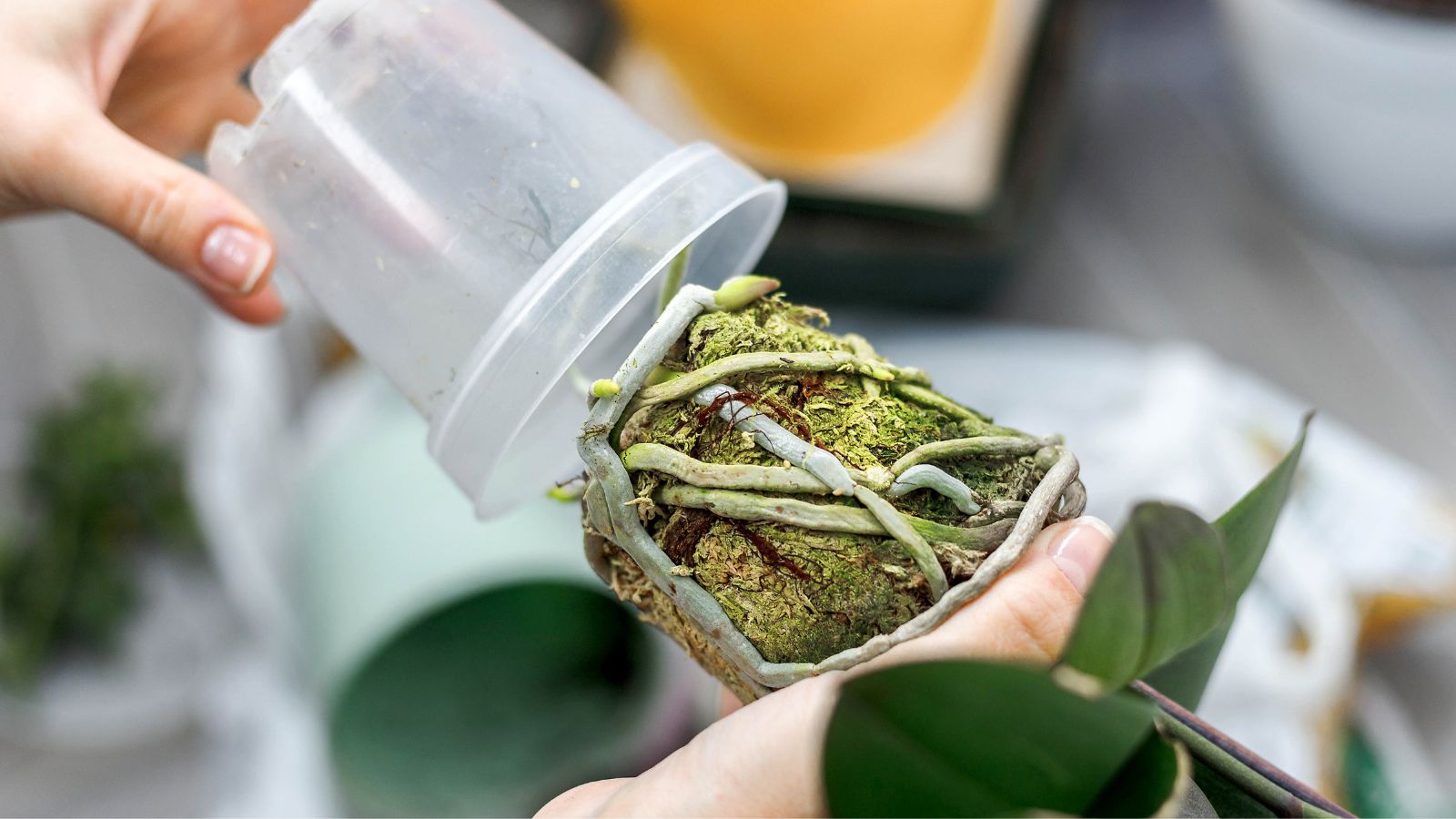

Whereas people sometimes make the error of choosing pot measurement based on the scale and type of crops, it’s best to really select pots based on the scale of the muse ball. Nonetheless with orchids, the pot sizes must significantly be based on the amount of roots.
While you take a look at your pot to discover a tangled mass of crowded roots, it’s time to repot. The truth is, this typically is a bit subtle since healthful specimens might need a great deal of aerial roots exterior of the pot, rising above the rising medium.
Regardless of aerial roots exterior the potting mix, you don’t want these contained within the pot to be too crowded.
If the root-to-medium ratio is off, with method too many roots in a pot and by no means ample medium, then there won’t be ample of your chunky mix to retain moisture for the plant. It is potential you will find yourself having to water more and more extra sometimes to keep up the plant happy.
Lack of air circulation inside the pot of an epiphyte will also be on no account suggestion. The additional crowded all of the items is contained within the pot, the additional most likely you may experience fungal progress or rot.
Excessive-Heavy Plant


Whereas the amount of roots must largely determine the scale of the pot, you may also should repot a top-heavy plant.
These epiphytes naturally develop in a horizontal methodology inside the wild. Besides incessantly rotated, they could most likely develop this style in pots, too. Over time, this ends in them “falling out” of the pot. A specimen with large, heavy leaves can merely topple over, significantly in a lightweight or small pot.
In case you have got a top-heavy plant that retains falling over or appears to be liable to doing so, think about its roots. Are they significantly crowded? In that case, it’s undoubtedly time to enhance.
Nonetheless, if they seem to swimsuit good and you have current healthful orchid mix in your pot, what should you do? Whereas it doesn’t appear like the traditionally applicable time to repot, you undoubtedly don’t want your plant falling over.
What you’ll be able to do on this event is repot proper right into a pot of the similar measurement that is so much heavier. This may anchor your top-heavy plant in place. Provides like ceramic and terracotta may go. Merely make sure that your new pot has a great deal of drainage holes and vents for aeration.
Outdated Medium
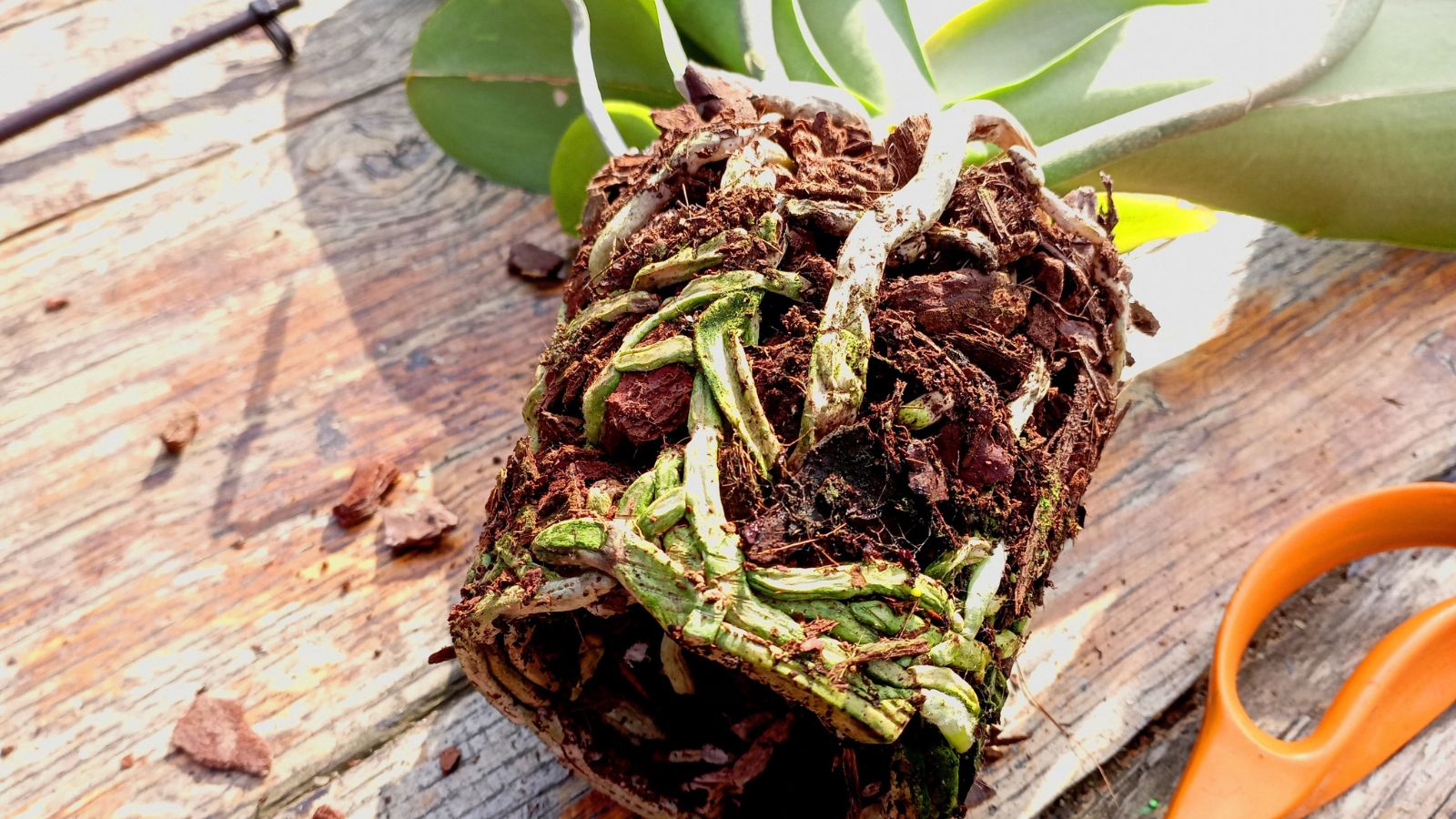

One in every of many trickiest options of rising orchids for houseplant lovers is getting the rising medium correct as a result of it’s so completely completely different from the potting soil you’d traditionally use for a Monstera, a peace lily, or a cactus.
While you lastly have the exact steadiness, whether or not or not you’ve created your particular person mixture of orchid bark and completely different media or simply purchased a high-quality “orchid potting mix,” regulate the medium contained within the pot. Over time, it’s going to begin to interrupt down.
Outdated, broken-down potting medium that is decomposing can lead to root rot. As bark breaks down, it holds further moisture. It would moreover harbor bacterial or fungal progress.
Even when it seems to be just like the roots match inside the current pot fully, you’ve obtained to protect your healthful plant from earlier media. If the current pot continues to be the exact measurement, you’ll take away the plant, throw away or compost the earlier medium, and replant the orchid within the similar pot with current media. Merely ensure you clear and disinfect the pot first.
If the medium is earlier, smelly, and decomposing, and your plant will also be a bit too huge for its current vessel? Repot, with current medium in a much bigger container.
Lack of Blooms
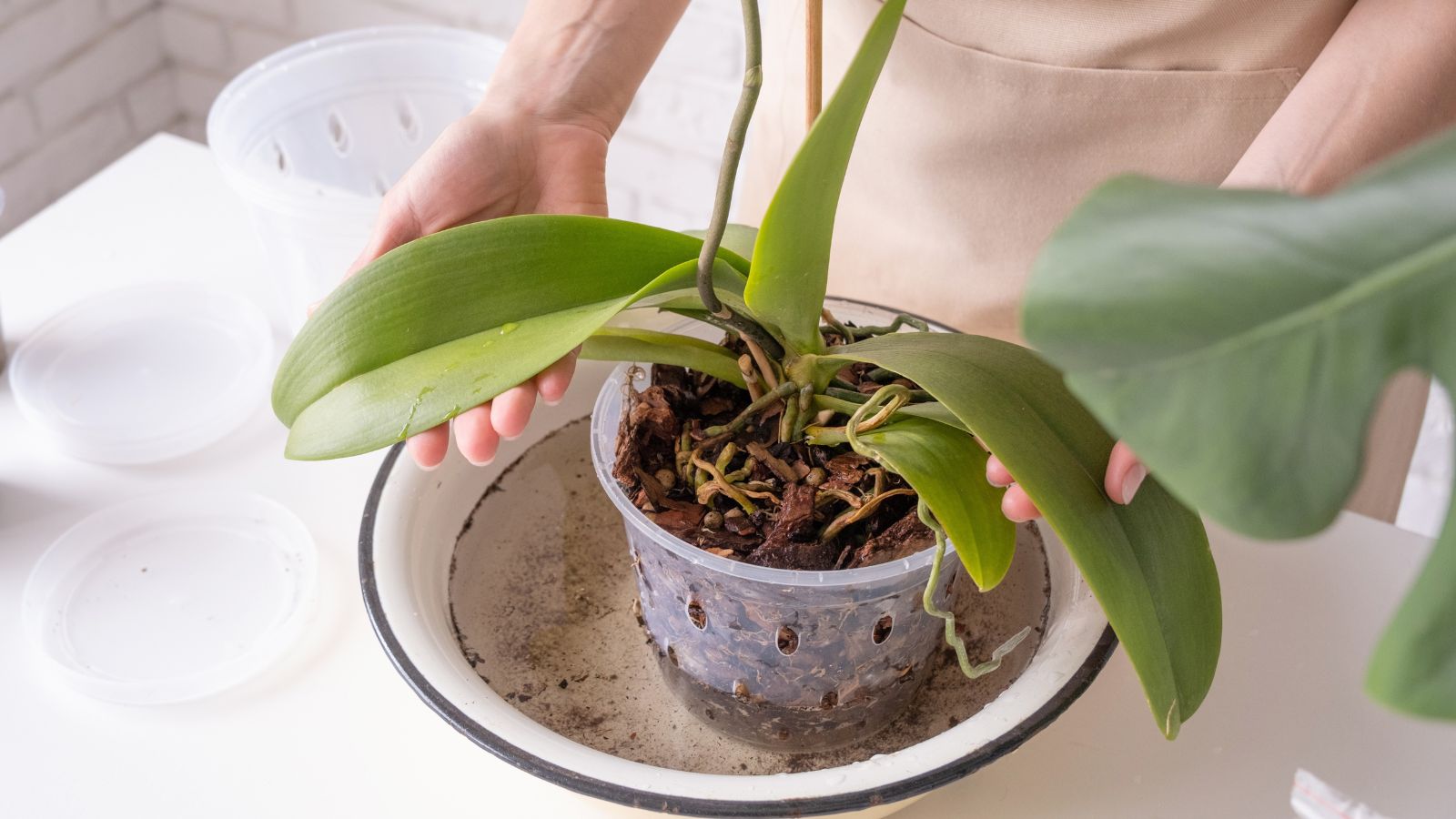

Let’s be honest. There are numerous the explanation why orchids won’t bloom as sometimes or as prolifically as you’d like. Lack of sunshine, lack of fertilizer, incorrect temperatures, drafts, unhealthy roots, and completely different factors can all set off a plant to stop blooming.
If yours hasn’t bloomed in a 12 months or two, there are numerous potential culprits. First, it’s best to play detective, slowly making it by means of the rules of the explanation why blooming has stopped.
Guarantee it’s getting the proper amount of sunshine, water, and fertilizer. Make certain that it’s housed inside the acceptable medium with a great deal of airflow. Affirm that your watering strategy is suitable. Really look at the complete potential causes.
In my experience, lack of sunshine tends to be the final word offender. It is potential you will assume your orchid is getting ample delicate near your hottest window or beneath a develop delicate, nonetheless presumably it isn’t. Switch it to a really brighter spot, and chances are you’ll even see a model new leaf inside weeks, and a flower stalk to watch later.
While you’ve completed your due diligence, merely think about that there’s nothing else you’ll be able to do, and have waited patiently for better than a 12 months, then attempt repotting. Perhaps an airier vessel or current medium will do the trick.
Stunted Progress
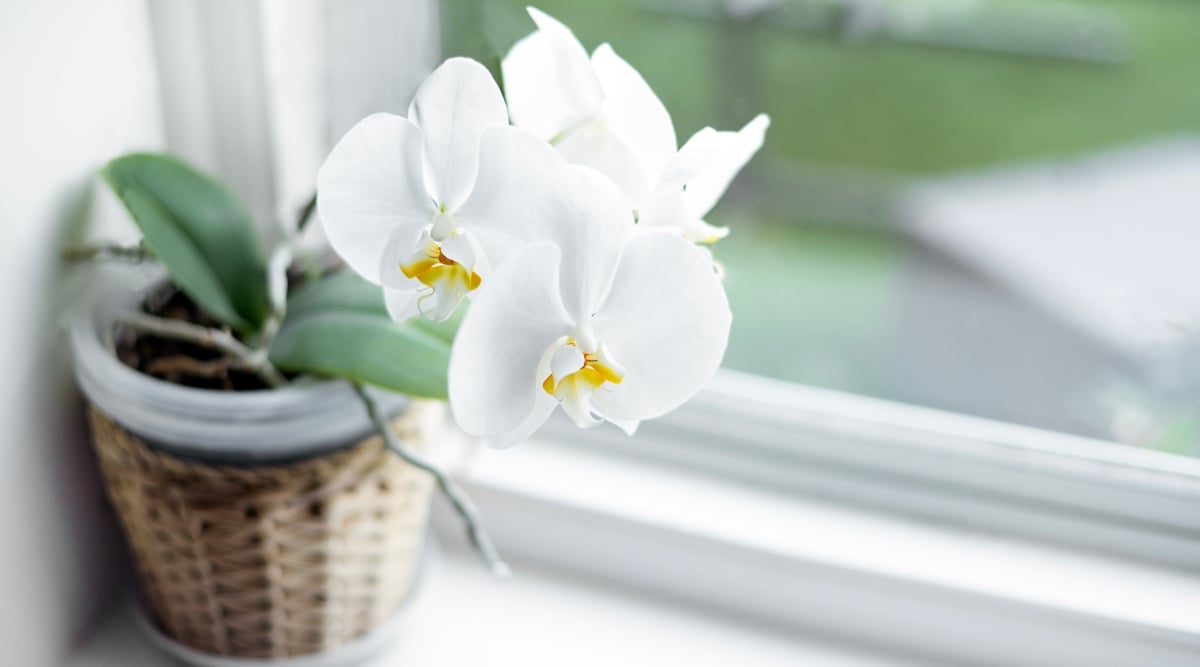

Very similar to the “lack of blooms” sign, many elements might trigger stunted progress. Orchids need merely the proper amount of water, appropriately utilized fertilizer, and further delicate than you’d assume to develop appropriately.
With time, your epiphyte would possibly experience stunted progress. This can be significantly apparent should you’ve had a plant for a really very long time and are accustomed to how shortly it grew before now. While you’re certain that your orchid has slowed down, it’s time to consider a repot.
Probably there isn’t as so much room inside the current container as needed. Perhaps that’s inflicting a shortage of water or nutrient uptake. Probably the medium isn’t exactly rotting, nonetheless it’s not as current as your plant would favor. These crops could also be picky!
In case your orchid has grown consistently for years and is in a beautiful place for proper photo voltaic publicity, nonetheless it’s all the sudden begun to develop fairly extra slowly, ponder repotting it. Shifting it proper right into a barely greater vessel with current medium might do the trick.
It’s going to moreover present the choice to look at intently should you’re transferring from one container to the alternative.
Wrinkled Leaves
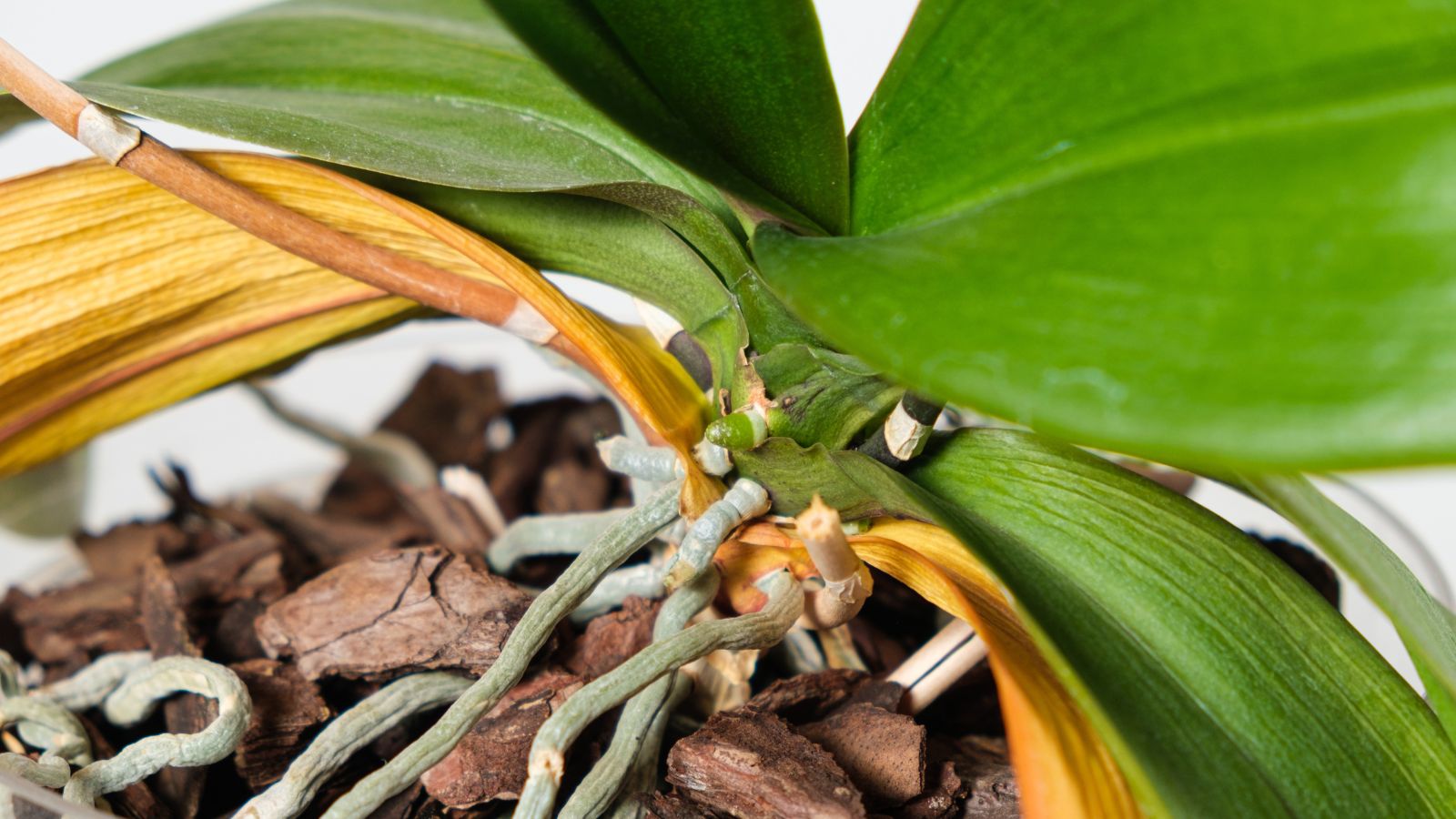

Wrinkled leaves in an in another case healthful orchid are an indicator that the leaves are often not uptaking as so much water as they’d like, ensuing within the puckering, wrinkled look. These leaves are most likely moreover floppy and battle to deal with their kind.
The truth is, the very very first thing it’s best to do for an orchid with wrinkled, wilting leaves is water it. Nonetheless, within the occasion you’ve discovered that your leaves proceed to look this style no matter a stellar watering schedule, it’s time to analysis the muse set off.
Orchids which have outgrown their container will dry out so much faster. The medium of their containers can solely comprise a sure amount of moisture each time you water. If the crops have grown greater with significantly further roots, they gained’t have entry to ample moisture.
Roots may also be unable to uptake so much moisture or nutritional vitamins from decomposing medium, which can end in wrinkled leaves. And finally, satirically, you most likely have watered an extreme quantity of and too sometimes, the roots might need rotted. This means they can’t uptake water, leading to wrinkled leaves.
Take into consideration repotting to a barely greater container with current medium. In case your orchid roots are rotten, rigorously take away the roots to restore root rot, repot into an appropriately-sized container, and take measures to avoid rot going forward.
Excessive Uncovered Roots


It’s fully common for orchids to have uncovered aerial roots. In nature, these crops wouldn’t be rising in soil. They wouldn’t be rising one thing that so much resembles “orchid bark” or “orchid potting mix” each. As many orchids are epiphytes, they flourish when hooked as much as timber or completely different crops.
Their roots have quite a few options. They not solely uptake water and nutritional vitamins however moreover wrap spherical and fasten to bark, tree limbs, and completely different surfaces to keep up the orchids in place.
As such, it fully is smart that they ship out roots in wild directions, not all of which can be downward into the medium. You might need even discovered some sticking to your partitions or furnishings.
Whereas uncovered roots are common and pure, an excessive amount of them would possibly suggest that it’s time to repot. More and more may be rising previous the medium on account of the vessel is just too crowded.
In summary, your orchid has outgrown its container. When upgrading to the next container, choose one that will have the power to comprise further roots. Be careful to not break any by way of the transition.
Spent Blooms
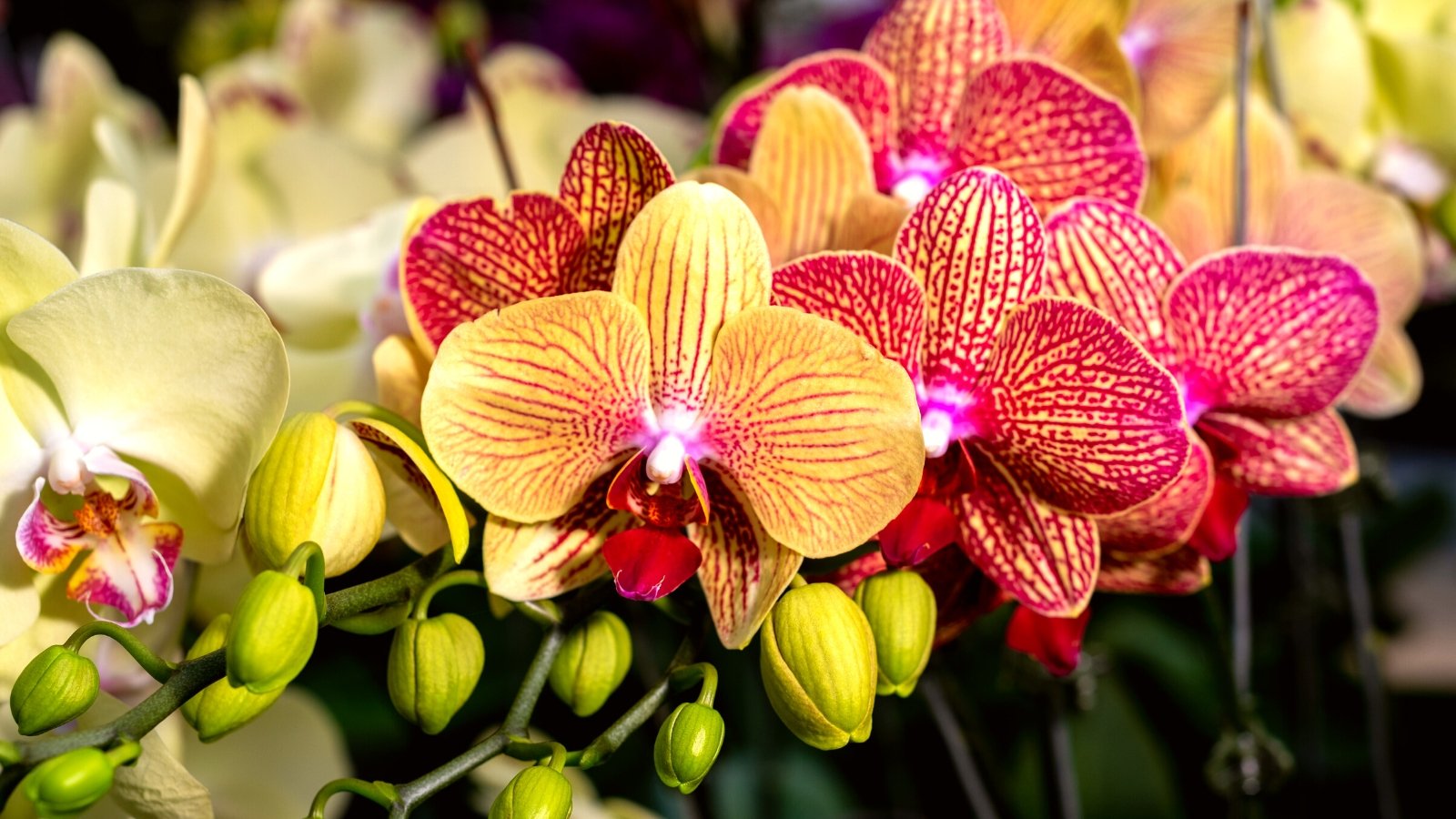

In case your orchid has merely accomplished blooming—as in, the flowers have fallen and the stem has turned brown—it’s maybe time to repot. This is not on account of the current vessel introduced in regards to the blooms to fade, nonetheless on account of the post-flowering interval is essentially the most safe time for plant repairs.
Blooms can closing for two to some months, after which their time is accomplished until subsequent 12 months. This generally is a common, healthful part of the plant’s life cycle and shouldn’t concern you. For a lot of growers, the flowers are the first goal they develop these crops.
Repotting orchids whereas they’re producing a flower stalk or actively blooming could also be traumatic to the plant, inflicting the stems or blooms to fade away. That is the explanation the perfect time to repot, for regardless of goal, is just after it’s accomplished blooming to cease harm.
Don’t be sad about spent blooms. As a substitute, embrace this window of time to securely repot your orchid with out damaging any flowers.
Perhaps you’ve noticed that it’s slowly outgrowing its current container or that the medium is getting sort of earlier. Probably you merely have a model new, engaging pot you’d prefer to make use of. Now’s the time to make the swap.
Pest Points
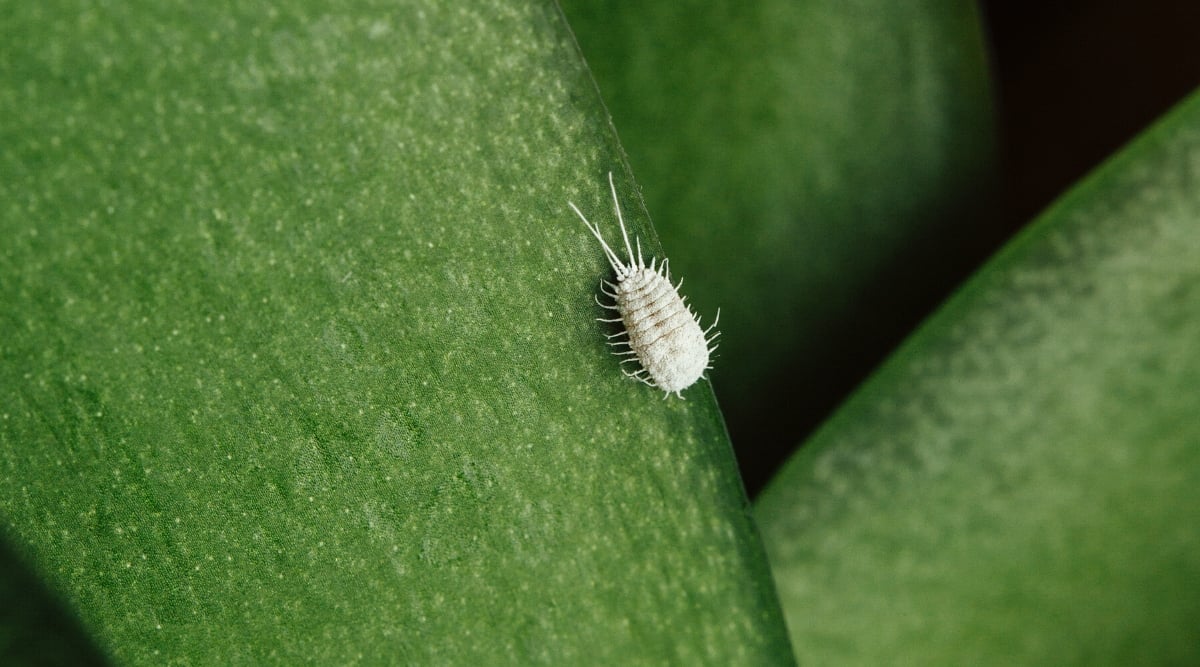

There are pretty just some pests that orchids would possibly battle with, significantly when grown in earlier decaying medium that hasn’t been refreshed in just some years. Mealybugs, scale, and completely different widespread houseplant pests might make their method onto the one that you simply love plant.
While you’re having pest points, the very very first thing it’s advisable do is decide the pest and evaluation the best strategy to cope with that pest. It’s extraordinarily most likely that part of that course of will include eradicating the plant, inspecting its roots, and altering the medium.
While you’ve tackled the pest in regardless of method is appropriate, it’s perhaps suggestion to solely repot your plant solely. Why hazard the earlier pot or the earlier medium that may nonetheless be significantly infested?
Start with a transparent, unused pot. Get current orchid potting mix or bark. Choose a vessel with great air circulation that’s merely barely greater than the muse mass. Your orchid has been by means of heaps; why not cope with it to a transparent new dwelling?
Rotten Roots
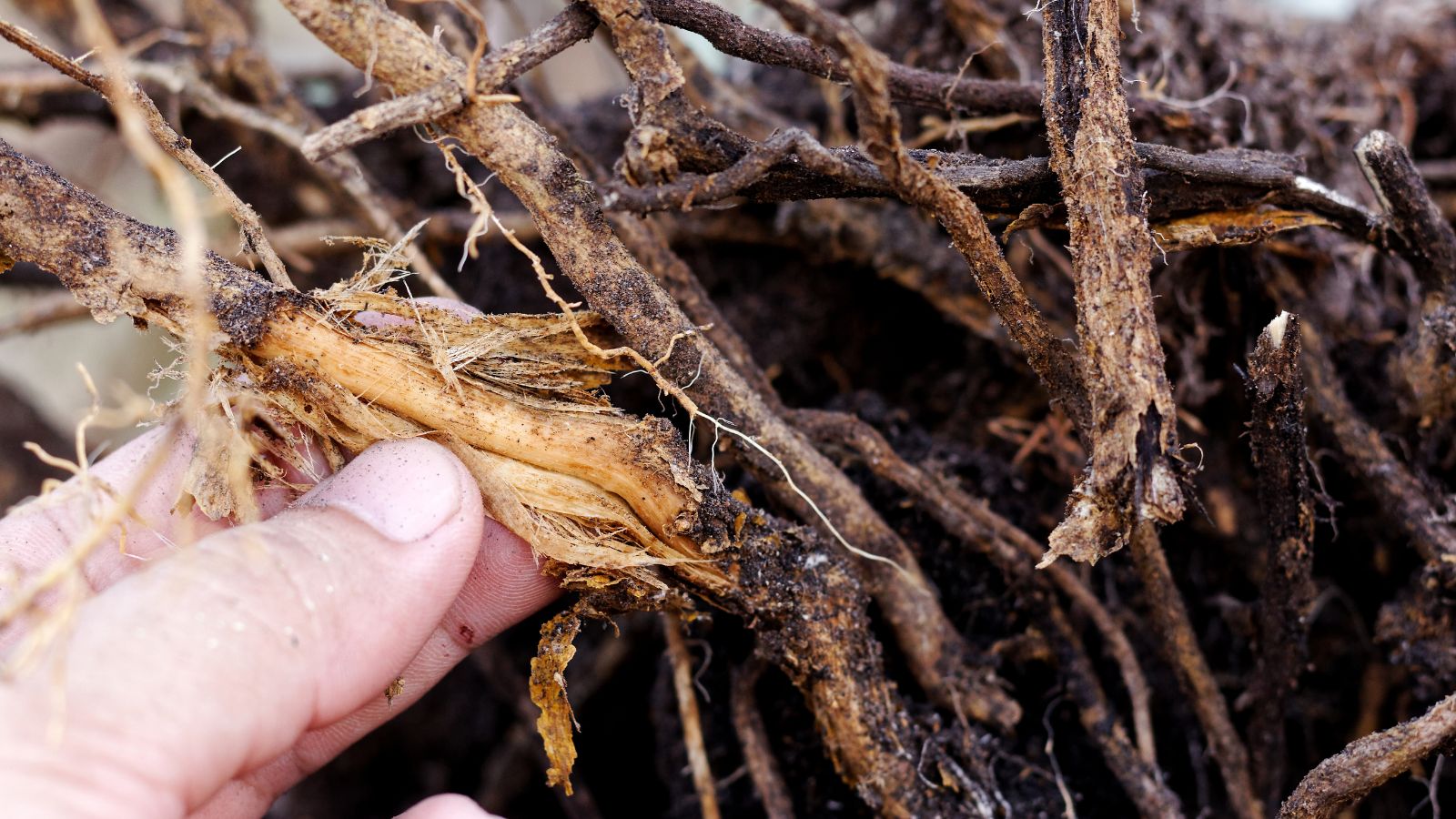

There are a number of the explanation why your orchid’s roots may be rotting. The most common is overwatering, which can occur should you water the plant too sometimes, when the medium returns an extreme quantity of water, or every.
One different cause for root rot is decomposing medium, which conjures up fungal progress which leads to root rot. Decaying matter is simply not a wonderful place for orchid roots to sit down down inside the stagnant air inside a home.
Whatever the goal, in case your roots have rotted, then it’s time for a refreshing repot. Take the acceptable measures to remove the rotted components, using sharp, clear pruners to sever them from the host plant.
As quickly because the rotted components are gone, think about the scale of the remaining root mass. Choose a model new vessel that is the correct measurement. Counting on how so much you eradicated, the model new pot typically is the same measurement as a result of the earlier one, or most likely even barely smaller.
Resolve why the rot occurred inside the first place. Did you water too sometimes? Did the media preserve an extreme quantity of water? Whether it is advisable alter the sort of potting mix, obtain this now by way of the repot.
Poor Nursery Pot


Lastly, sometimes you get a model new orchid on the retailer or receive one as a gift, solely to immediately perceive it seems doomed from the start. It might very nicely be in a pot with zero drainage, in typical potting soil, or potted too deeply with a buried crown.
Whatever the goal, it’s perhaps not too late to place it apart. Merely repot your new plant right away. Evidently blooming orchids would possibly drop their flowers if disturbed, so pursue this repot at your particular person hazard. It is worthwhile to weigh the significance of the blooms to the precariousness of the plant’s current state of affairs.
If the orchid is in an trustworthy state of affairs—not best, nonetheless not deadly—ponder prepared until after the blooms are spent, then repot. While you assume the current state of affairs might rot the plant after a month or two, then it’s best to perhaps switch it to an appropriate pot right away.
If it isn’t blooming to start out with, then why not repot it now? Give it per week or so to acclimate to your personal dwelling, after which switch it to a changing into container with current, ethereal potting mix.
[ad_2]
Provide hyperlink
